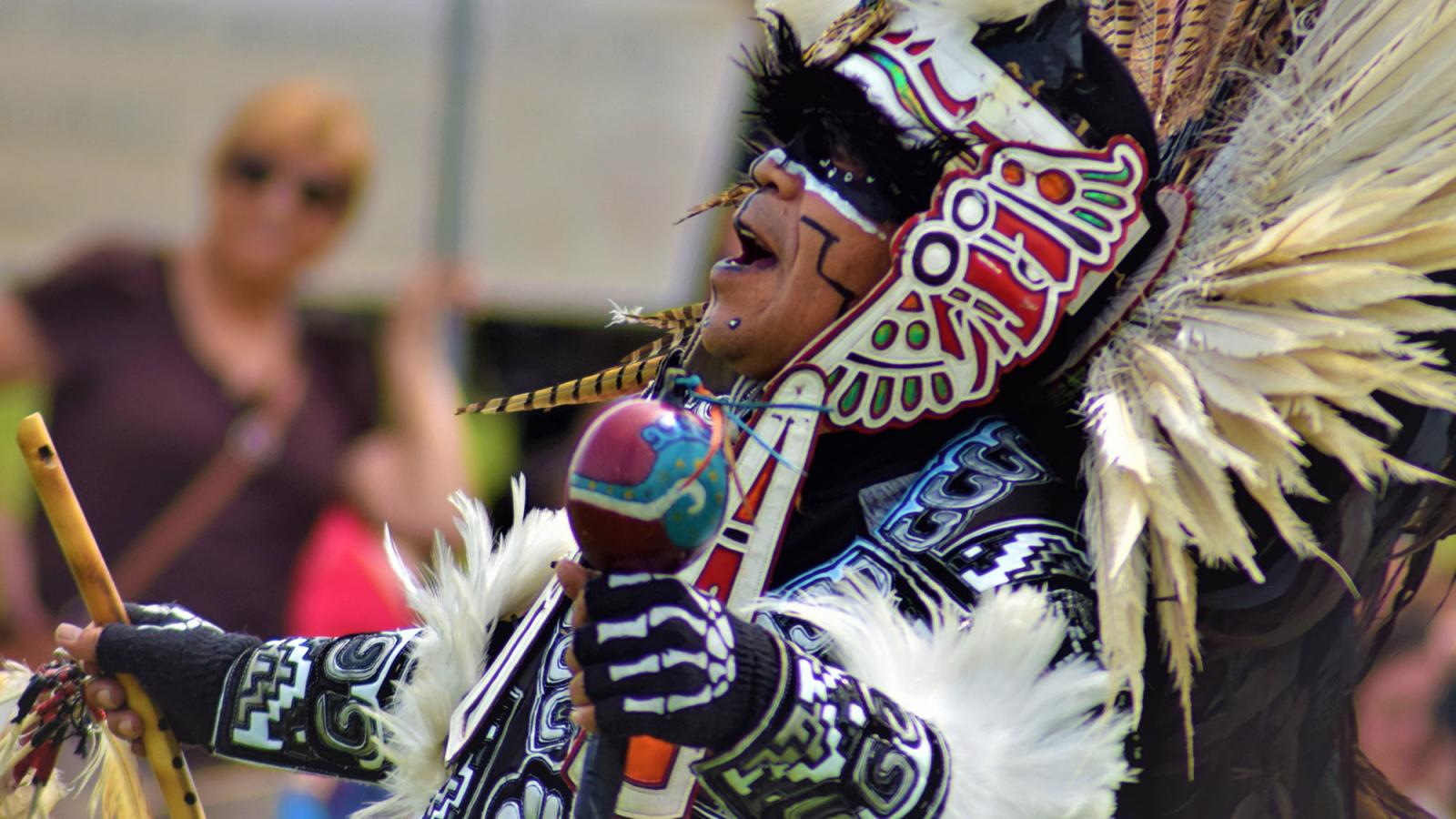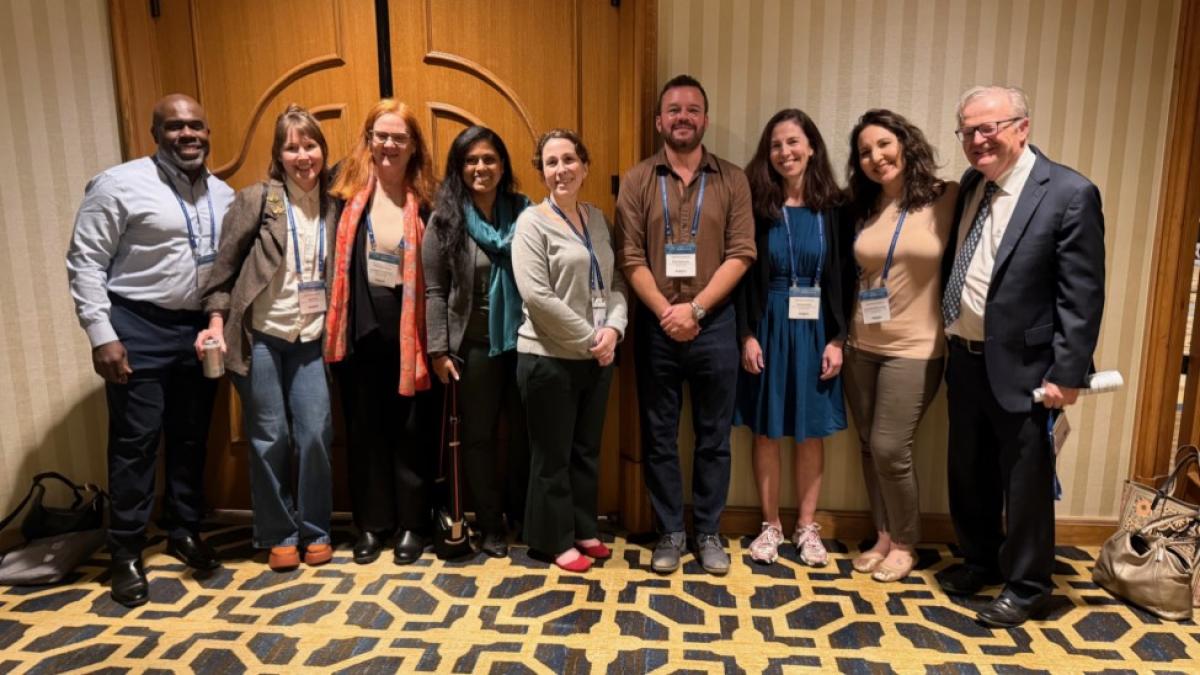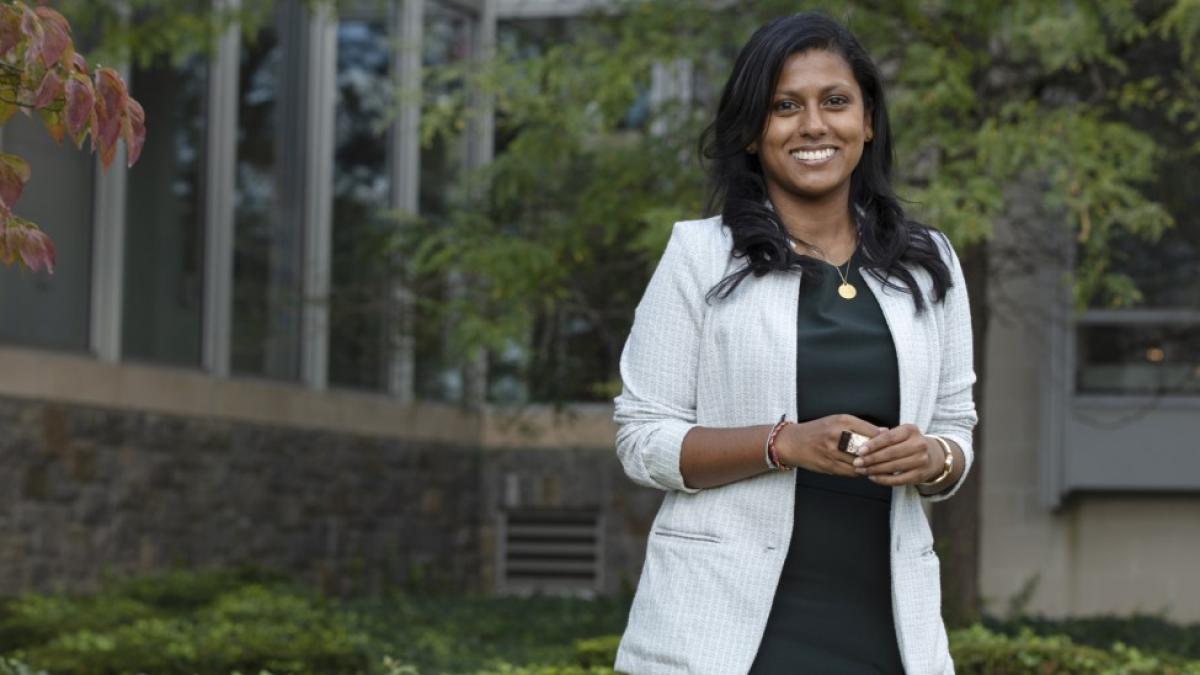Faculty and leadership from the Elisabeth Haub School of Law at Pace University participated in the American Association of Law Schools (AALS) Annual Meeting, held January 6–9, 2026, in New Orleans, Louisiana.
Decolonizing the Academic Calendar: How (Not) to Observe Columbus Day

Columbus Day isn’t on Pace’s academic calendar this year! In fact, it was removed for the first time in 2019. It’s understandable if my colleagues haven’t noticed, because the University holds classes as usual on the second Monday of October, which has been a federal holiday associated with Italian American heritage since 1937. However, let me note that Indigenous Peoples’ Day isn’t on our University’s calendar, either. As another way of remembering the settlement and colonization of the Americas, Indigenous Peoples’ Day is what a growing number of individual states and municipalities have officially renamed this federal holiday since 1990. [1]
Of course, we could choose to remember Indigenous people every day by introducing into our campus culture the convention of the land acknowledgment, a public statement that “inserts an awareness of Indigenous presence and land rights in everyday life.” [2] It names our relationship to the people whose traditional lands we occupy, and it typically includes an event- or audience-specific reflection on the meaning or challenge of decolonization in the immediate context.
Pace University is located on the unceded land of the Lenape people. We acknowledge the Lenape community, their elders past, present, and emerging, and that our work is situated on the island of Manhattan (Menohhannet or On the Island), traditional lands of the Munsee Lenape, the Canarsie, Unkechaug, Matinecock, Shinnecock, Reckgawanc and the Haudenosaunee Confederacy. We respect that many Indigenous people continue to live and work on this island and acknowledge their ongoing contributions to this area. This acknowledgement is part of our commitments to dismantle the ongoing legacies of settler colonialism and white supremacy. [3]
This land acknowledgment has been developed by Dyson Associate Professor Emily Welty, PhD, who directs our Peace and Justice Studies program, drawing on the work of the Safe Harbors New York City Indigenous Collective (SHNYCIC), whose decolonizing mission for the world of theater and the performing arts starts with rebuilding our relationships to Native artists and communities. In our case, the complexity of our relations to Indigenous land begins with the displacement of the Lenape people from Pace’s environs by William Penn and other Quaker settlers in the 17th century. Their diaspora survives today as the Delaware Tribe of Nations in Oklahoma and Kansas, the Delaware Nation in Oklahoma, the Stockbridge-Munsee Band in Wisconsin, and the following First Nations in Ontario: the Munsee-Delaware Nation, the Delaware Nation at Moraviantown, and the Delaware of Six Nations. Lenape communities that have not been federally recognized include the Ramapough Lenape Nation and the Nanticoke Lenni-Lenape Tribal Nation in New Jersey, and the Lenape Nation of Pennsylvania.
Imagining what decolonization could mean at Pace has begun with our curriculum: a new course in Native and Indigenous Peoples Studies created by artist and educator Ty Defoe (Giizhiig, Ojibwe, and Oneida Nations) is now being offered every semester. It’s part of the Critical Race and Ethnicity Studies track of our American Studies program, which partners with Latinx Studies, African and African American Studies, and Global Asia Studies on campus in teaching students that critical thinking about race/ethnicity does not pursue “correct” answers, expect easy solutions, or rest on received knowledge. Together with programs such as Peace and Justice Studies, we are currently developing an Antiracist Education (ARE) core undergraduate requirement to address the educational gaps created by legislation banning critical race theory in a growing number of states.
Indigenous Studies started emerging in universities around the world in the early 2000s, and it changed how colonization was understood in the previous century. As Lorenzo Veracini explains it, “if I come and say: ‘you, work for me,’ it’s not the same as saying ‘you, go away.’ This is why colonialism is not settler colonialism.”[4] As opposed to the Indian subcontinent where the British ruled and then left, the “India” that Columbus thought he’d found in the Caribbean (or West Indies) was settled thoroughly, and the original inhabitants of the land were made to “go away” through policies of genocide and physical displacement by immigrants and forced migrants in patterns of occupation that continue in this hemisphere today.
In the words of one of my students, Janvi, an Art and American Studies double major, learning about Indigenous Studies at Pace has “expanded on my personal spiritual views. I was intrigued to learn about Mahu and Two-Spirit people, how sexuality and intimacy are respected and taught, and their views on earth and healing.” Abby, another student studying Musical Theater at Pace and taking an introduction to critical race theory with me, says that what “changed my perspective the most is learning how the US lumps Indigenous peoples into the idea of multiculturalism.”
As an example of the weighty lesson that Abby phrases with such clarity, and as an illustration of the challenge that Indigeneity poses to politics-as-usual, let me share a real exchange with a fellow professor—someone I describe as a conscientious and reliable white ally to people of color. Wanting to expand the social justice impact of our land acknowledgment, this professor suggested that we also mention our campus’s proximity to the African Burial Ground, a national monument marking the gravesites of more than 400 free and enslaved people of African descent unearthed with downtown construction in 1991. While I feel that recognizing anti-Black racism is a daily essential, I decided to encourage this coworker not to add anything to our land acknowledgment that might take the emphasis off Indigenous land rights. Even their symbolic recognition can prove controversial, disruptive, and revealing in important ways, as we learned when a recent proposal to open faculty meetings with a land acknowledgement was voted down by colleagues who worried that officially mentioning Indigenous land rights could expose our university’s real estate holdings to future liability.
Critical Race and Ethnicity Studies scholars today are more resistant than ever to blurring the distinctions between this nation’s relationship to stolen bodies and the stolen ground in which they are buried. Black and Indigenous scholars respectively have observed that an ethic of multicultural inclusion cannot hope to redress or repair the non-ontological status—or the political nonexistence—of Blackness and Indigeneity. Afro-pessimism names such a school of thought that has flourished across academia, the art world, and activist discourse, and which creates powerful conversations in Pace classrooms today. The civil society we seek to perfect, and which disproportionately fails people of color, is dependent on the ongoing colonization of Indigenous people on the American continent, in the Caribbean, and in the Pacific. These injustices are neither equivalent nor comparable, and we should question under what circumstances or from whose standpoint they can be mentioned in one breath.
While we may have retired Columbus Day from the academic calendar, we’ve also gained another symbolic holiday in the form of Veterans’ Day, which is always November 11. There’s a neat parable for American Studies here: Notice how over-determined or, in other words, how easy the shift from honoring those sacrificed in America’s wars to remembering that the frontier was the first front line, and Indianness is both alive and dead in US military culture (e.g., Tomahawk missiles, Apache helicopters, “in[dian]-country”).[5] What we might mistake for an abstaining silence on the status of Indigenous Peoples’ Day on our calendar turns out to be an opening for acknowledging Indigeneity daily, because as First Nations hip-hop artist Drezus (Plains Cree) tells us, decolonization is also a culture war that needs us all combat-ready.
About the author: Stephanie Hsu is an associate professor of English and program director of American Studies at Pace University; a board member of Kyoung’s Pacific Beat peacemaking theater company; an editorial collective member of the Q+ Public book series with Rutgers University Press; and a co-founding member of Q-WAVE, a grassroots organization for queer women and trans people of Asian/Pacific Islander descent in New York City.
Footnotes
- For the first time this year, the New York City Department of Education is jointly recognizing “Italian American Heritage/Indigenous Peoples Day.”
- “Territory Acknowledgment,” Native Land Digital
- Thanks to Dr. Emily Welty for permission to share this land acknowledgment which draws on the work of SHNYCIC, and to Linda Chapman of the New York Theater Workshop for sharing their work.
- Lorenzo Veracini, “Introducing Settler Colonial Studies,” Settler Colonial Studies 1 (2011): 1.
- See chapter 4 of Roxanne Dunbar-Ortiz’s An Indigenous Peoples’ History of the United States (Boston: Beacon Press, 2014), 56–77.
Header image from the Nanticoke Lenni-Lenape 40th annual pow wow.


